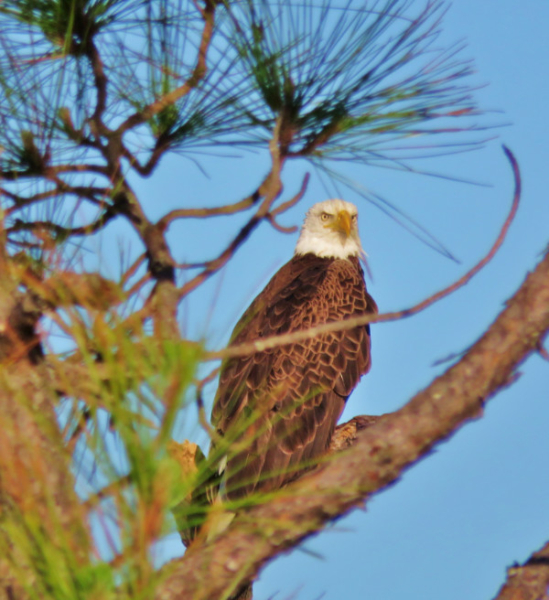Of the many beautiful and majestic birds seen in the Plantation, the Bald Eagle perhaps inspires us the most. Once endangered in the 48 contagious US States, our nation’s symbol has made a good comeback. From 300,000– 500,000 birds in the early 18th century, the Bald Eagle population fell to only 412 nesting pairs by the 1950s, mostly due to DDT pesticides, shooting, and trapping. With better protection efforts, their population has significantly rebounded to as many as 100,000 nesting pairs today. They’ve now earned the distinction of “least concern” and have become a conservation success story.

